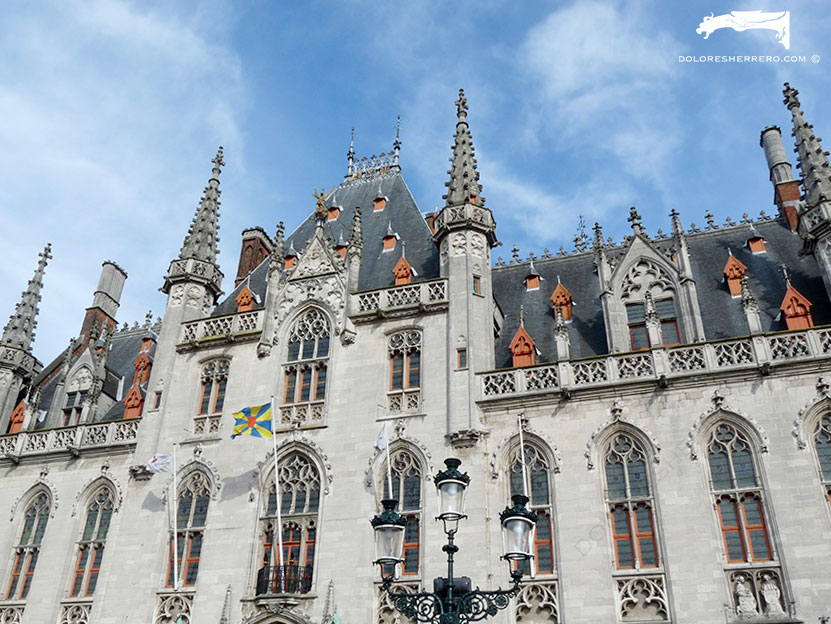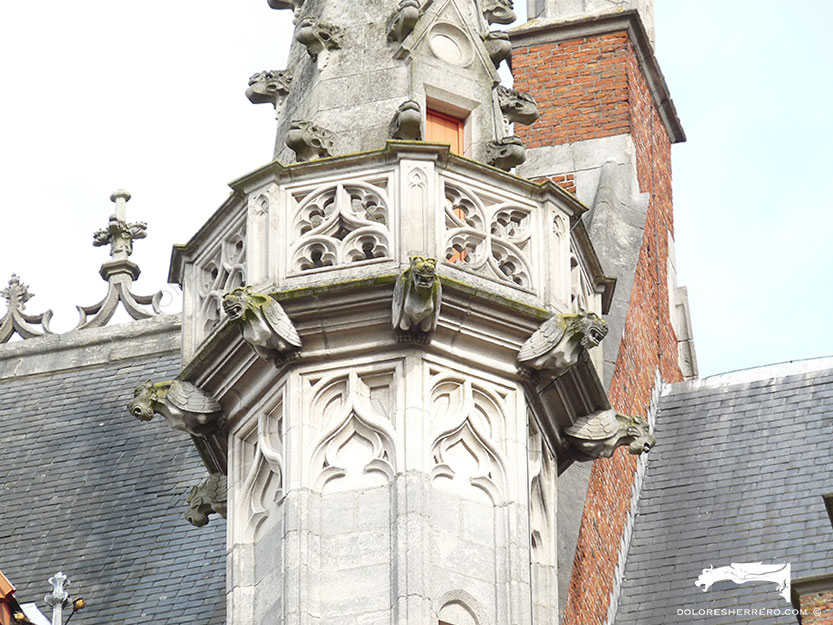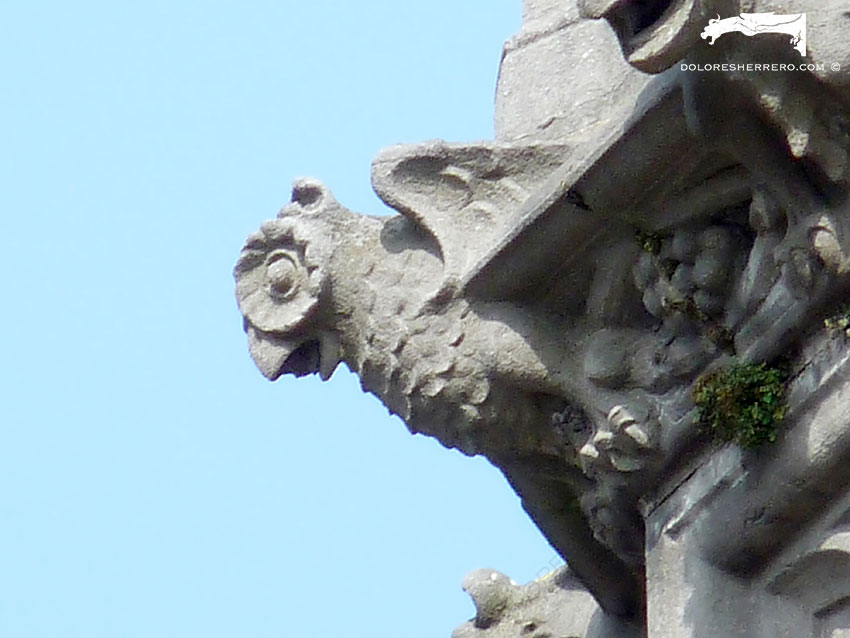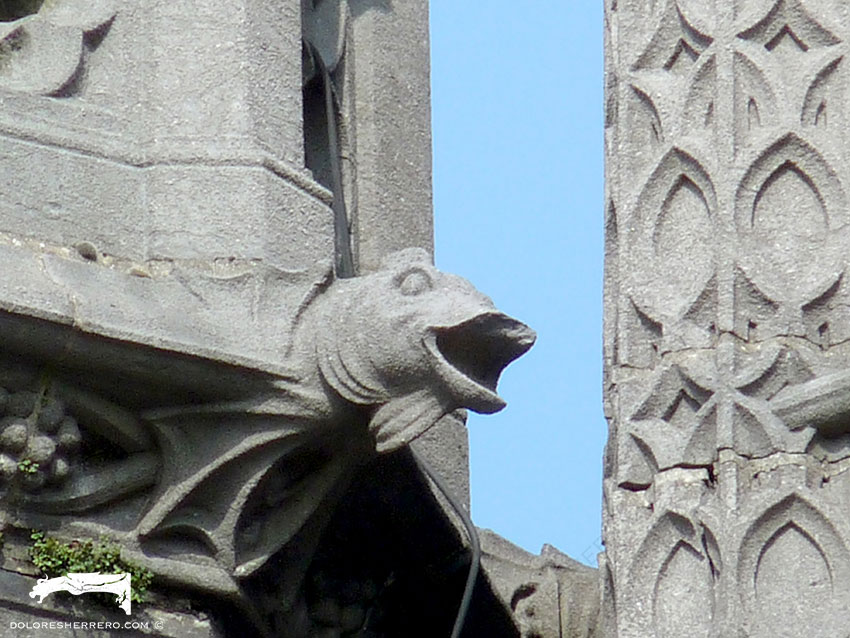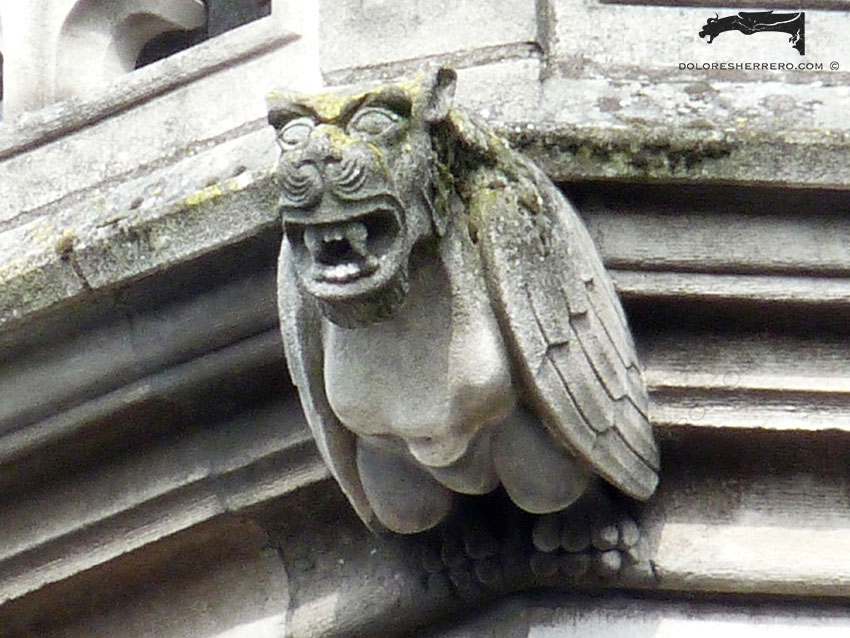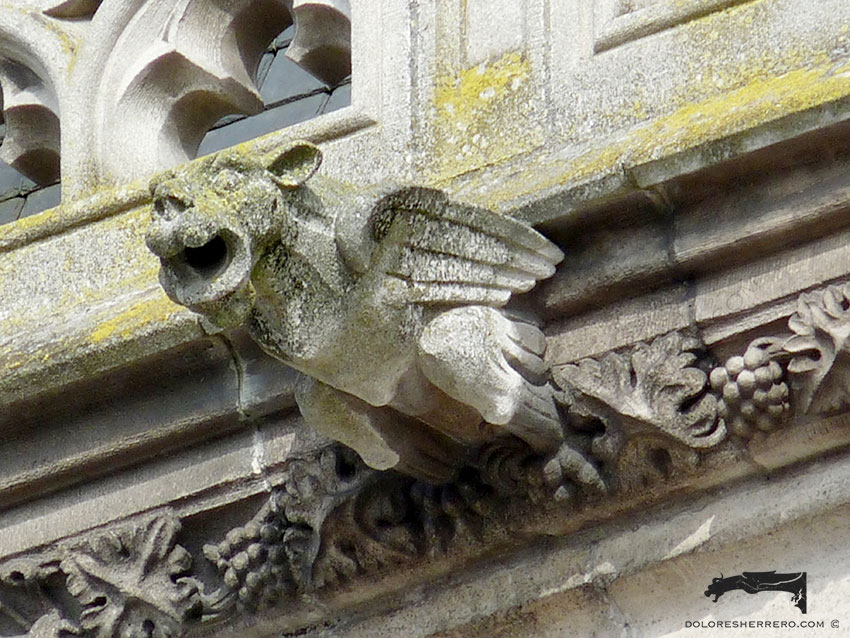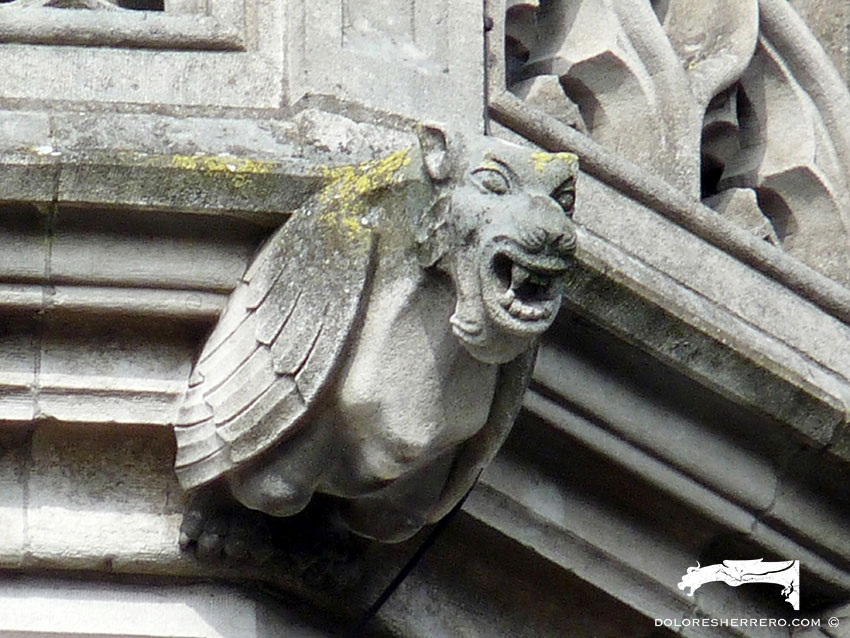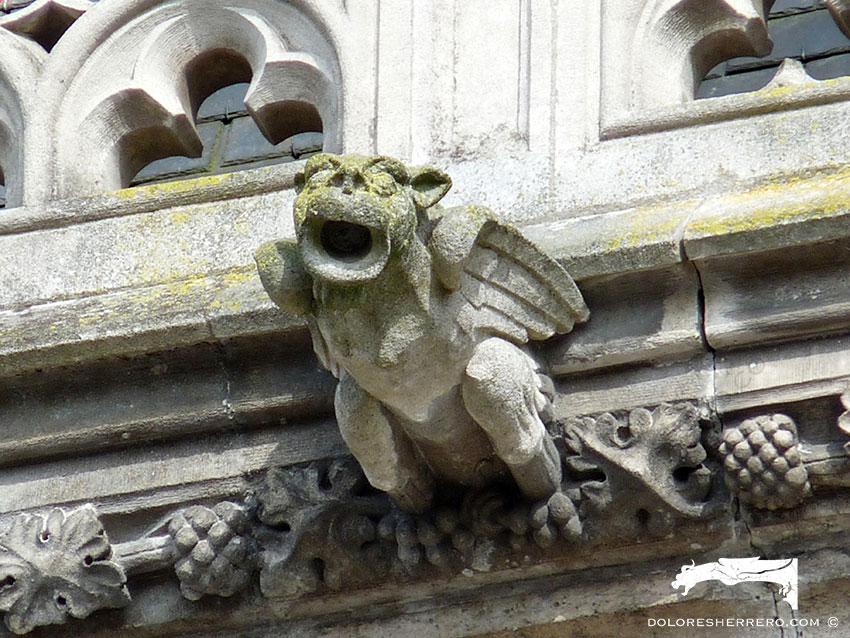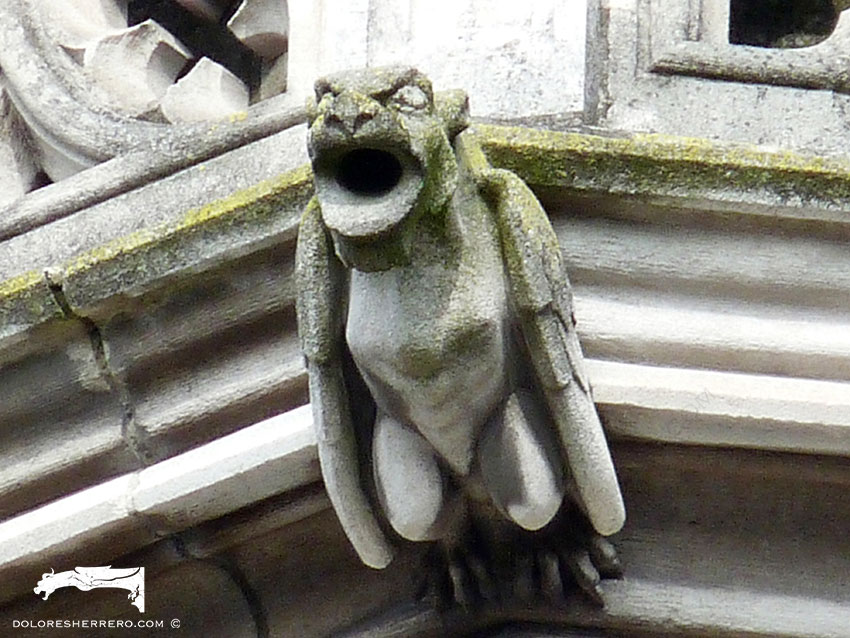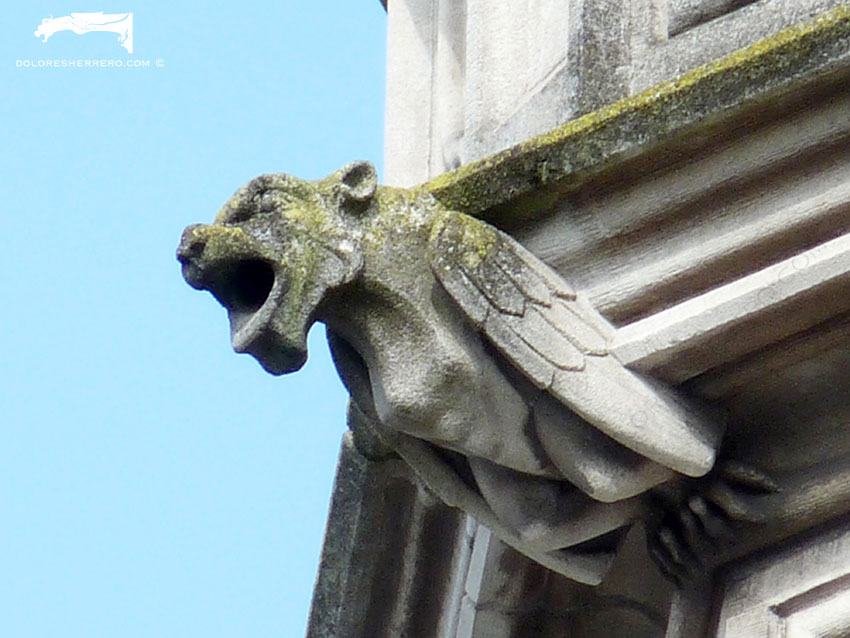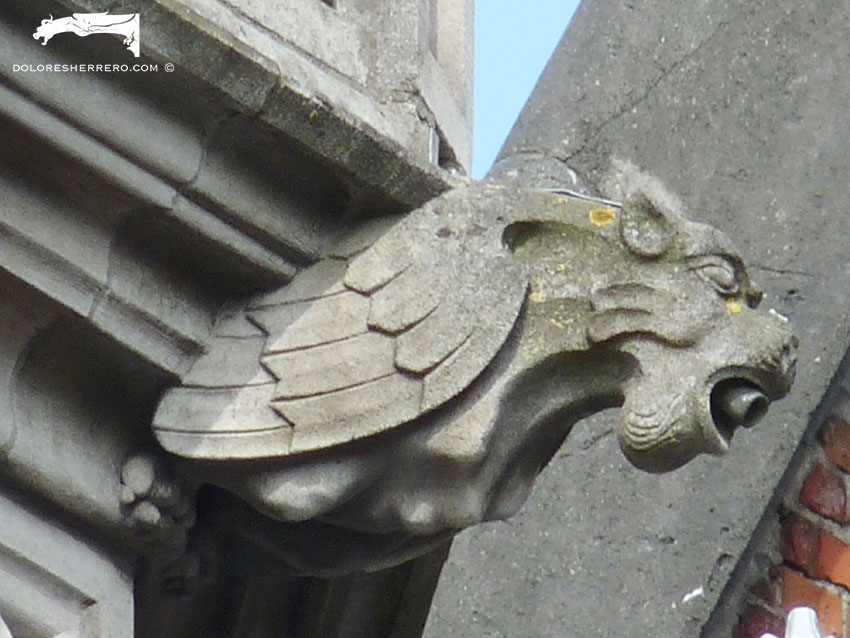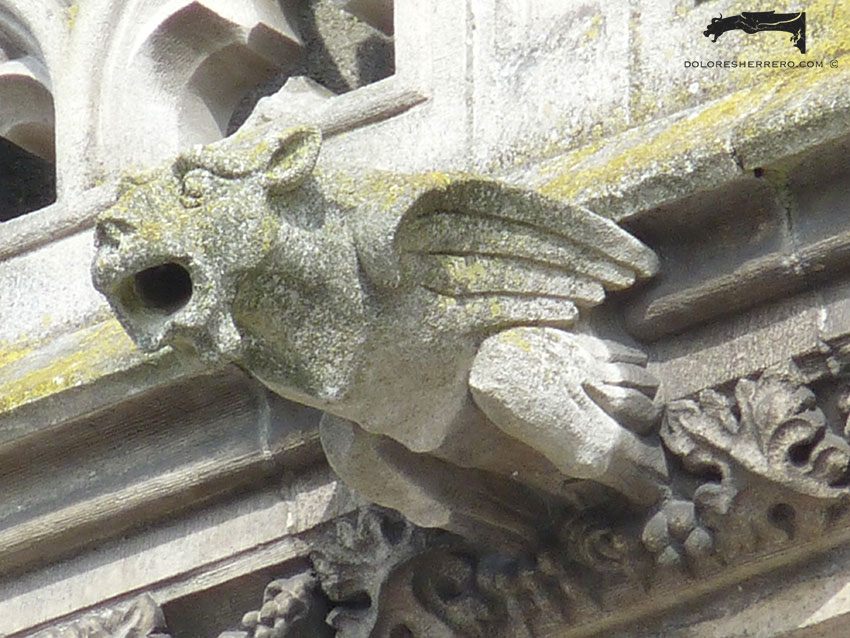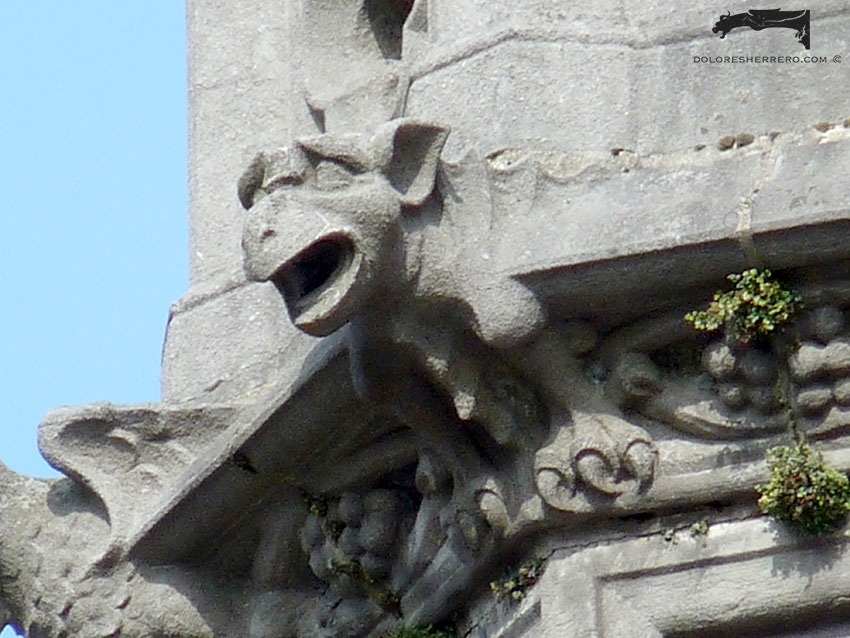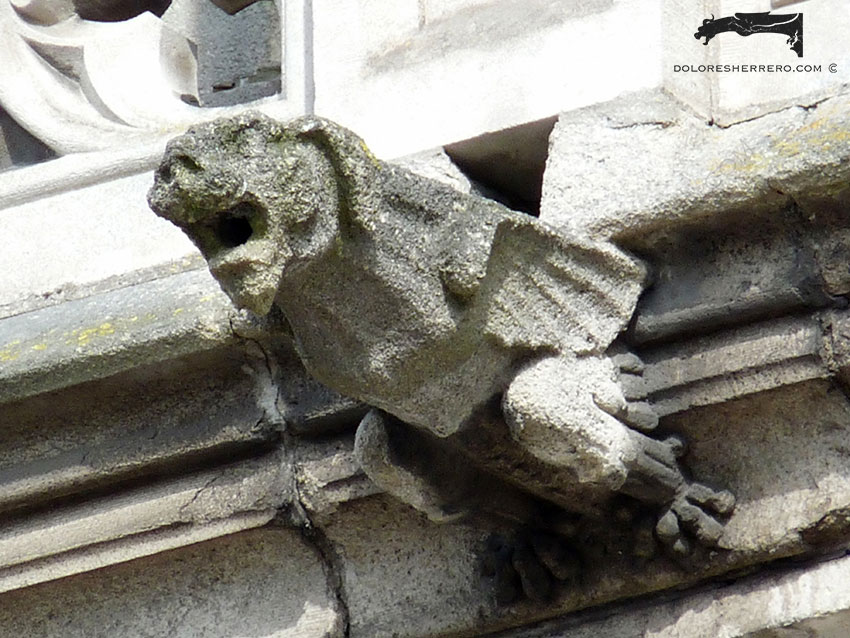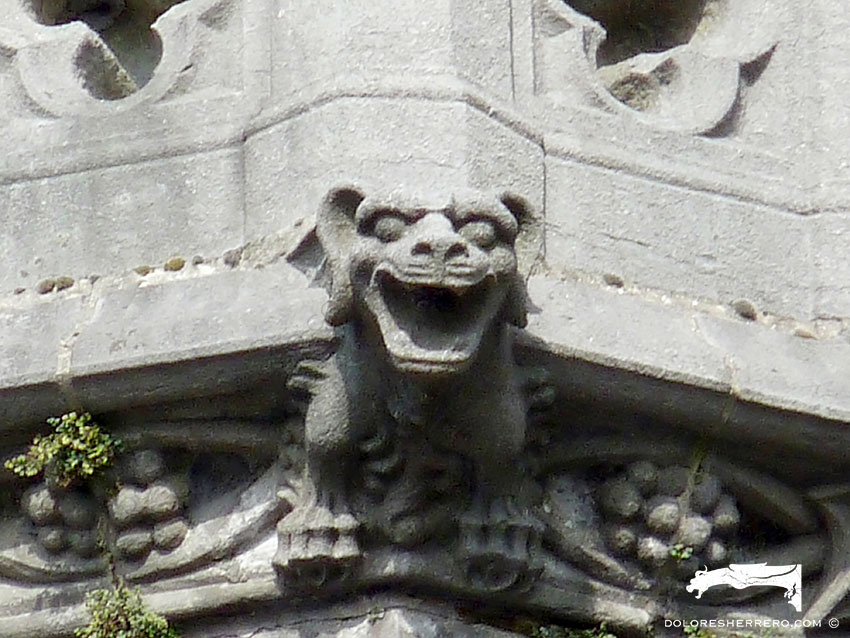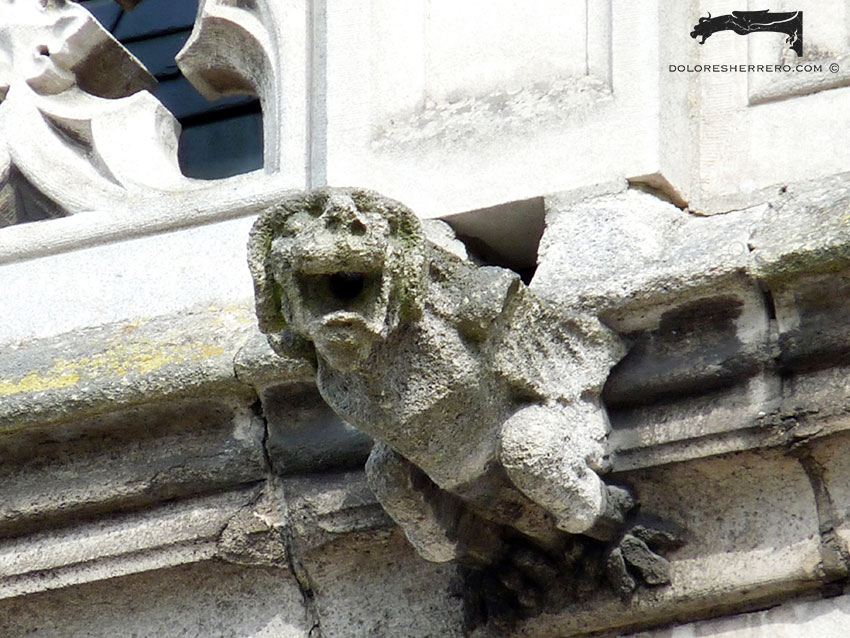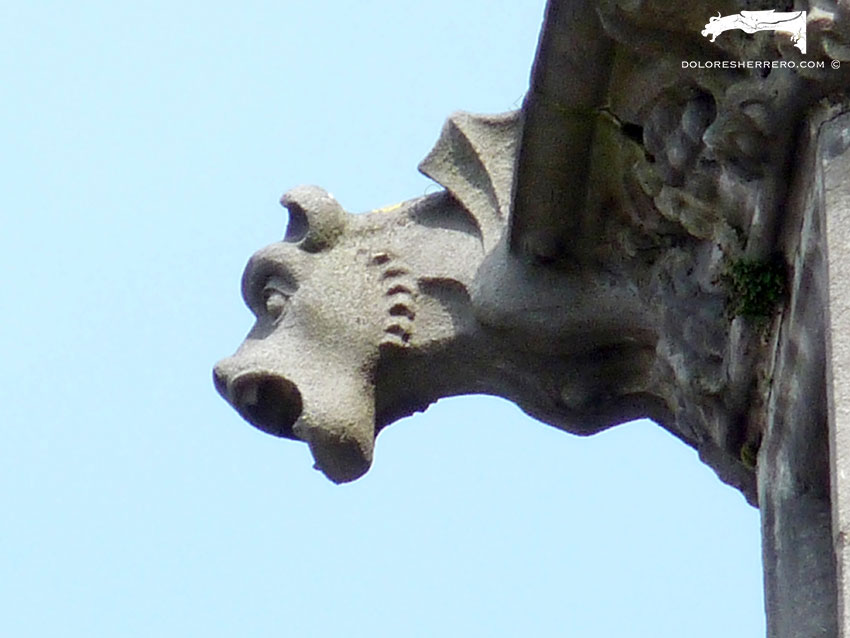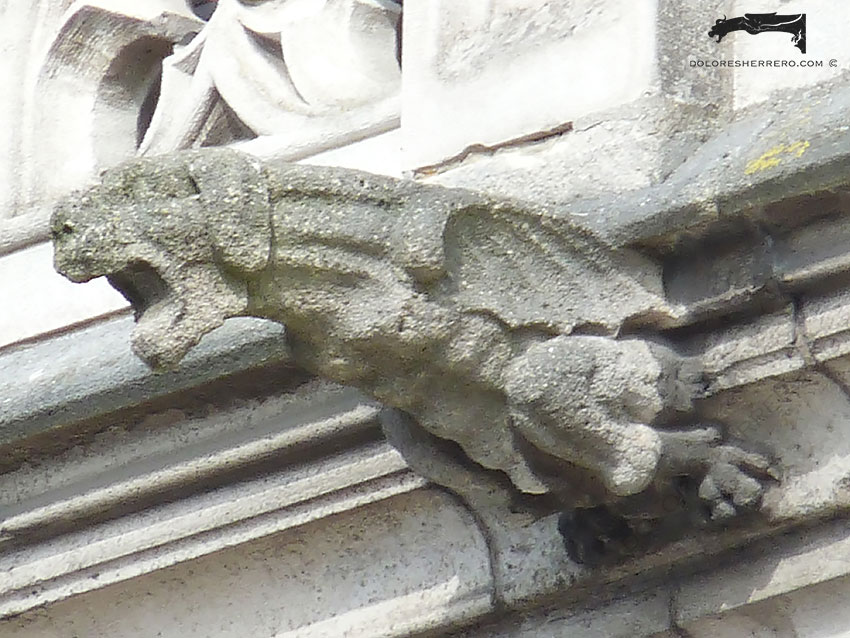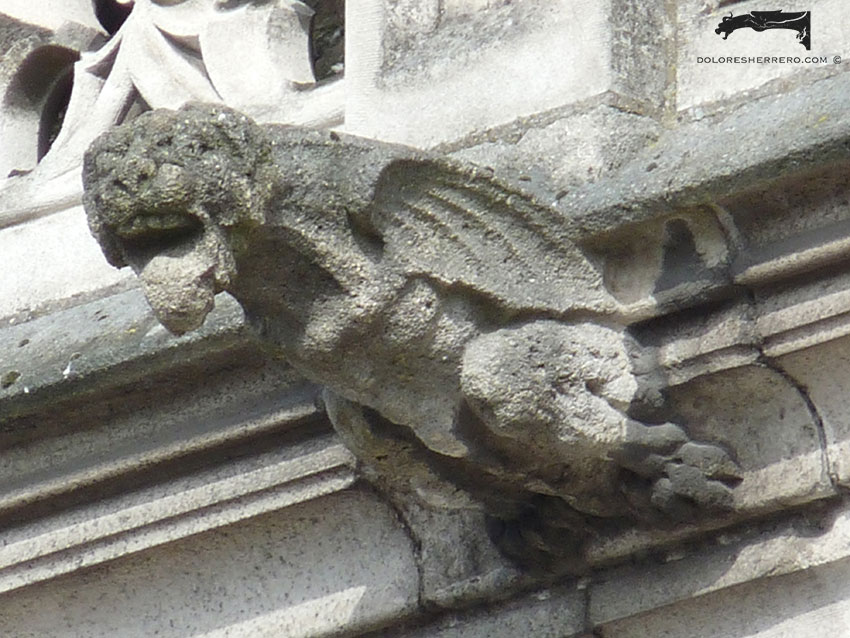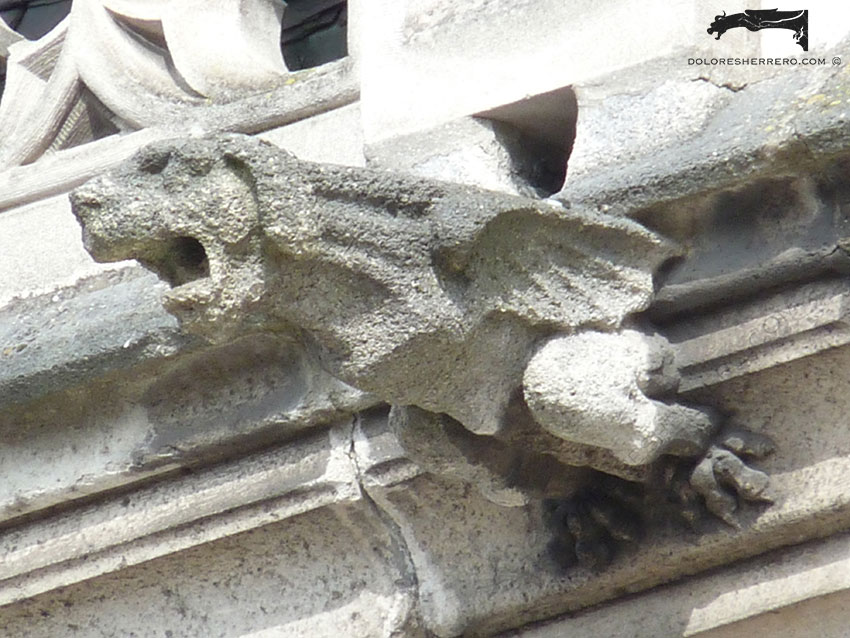In today’s post we’re returning to the wonderful city of Bruges (Belgium) to discover a few more of its gargoyles. Immersed in its atmosphere of magical, fairy-tale architecture, once again we find magnificent gargoyles jutting out from the city’s splendid buildings.
These include the Provincial Palace, a majestic Neo-Gothic style building dating from between 1887 and 1921 and standing in the Market Square. Its white stone façade is one of the most attractive features of the buildings in the famous Grote Markt. The Palace stands on what was originally the site of the medieval Water Halls. Today it’s the seat of the Provincial Government.
Gargoyles
There are several different types of gargoyles. You can see real and hybrid animals as well as animal monsters and devils.
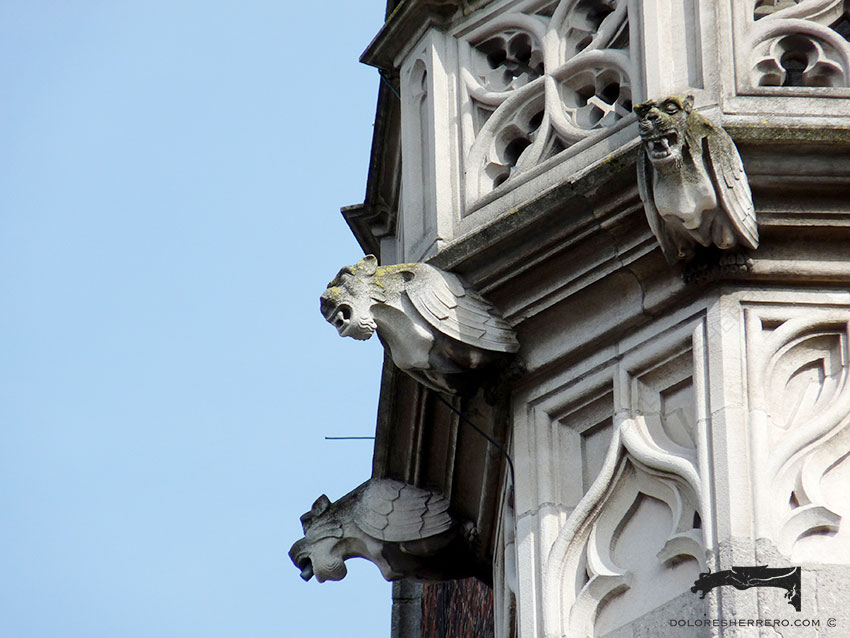
Animals
We discovered two peculiar and unexpected animals, the owl and the fish. We’ve already discussed owl symbolism in a previous post. However, let’s remember that the owl was regarded as an attribute of Christ who sacrificed himself to save humanity; on its negative side it’s identified with Satan for being an animal that hides under cover of darkness and shuns the light.
It’s not common to see fish depicted as gargoyles. Fish are symbolically identified with Christ. This is because the letters in the Greek word ichthus (fish) make up the initials of the words forming the phrase: Jesus Christ, Son of God, Saviour. This acrostic spread from Rome out to all Christian groups as a “secret” symbol in times of persecution; only people who were familiar with Christian teachings could understand its meaning. This is why the fish symbol was often used in primitive Christian art and literature. The fish is also used as a symbol of baptism because, just like fish can’t live out of water, true Christians can’t live unless they have been washed clean by baptismal water. Tertullian (2nd century) says: “We, little fishes, after the example of our ΙΧΘΥΣ (Fish) Jesus Christ, are born in water, nor have we safety in any other way than by permanently abiding in water”, in other words, in the faith of baptism. In terms of its negative meaning, hellish fish like Leviathan also exist, because, as with almost all the symbols of Christ, the fish was adopted by Christian symbolism to represent the devil, both in literature and in art. The Book of Job, which gives the name Leviathan to the monstrous king of the sea, was the inspiration for fish-like images of evil, with a head more or less like a dolphin spewing fire out of its mouth and devouring the damned.
- Owl
- Fish
Animal monsters
Hybrids or animal monsters are very peculiar figures both in terms of form and type. We see some with dog-like heads and others that look like lions, with huge claws, canine teeth, long or short wings, and bulky chests or throats giving the appearance of front legs inserted into their bodies, a feature we already saw in some of the gargoyles on the Burghers’ Lodge in this same city.
Devils
The devils are similar figures to the previous ones ― we could include all of them in the same type ― however we’ll call devils the ones that possess one of the main features of the demonic type, that of bats’ wings. Remember that wings are an element linked to the devil as they suggest the idea of fallen angel. From the 9th to the 13th century, the devil was portrayed with feathered wings like those of angels, but darker and shorter. And around the 14th century we start to see the devil with bat’s wings, as described by Dante in his Inferno. They also have other features such as goatee beard, claws, protuberances and marked throats like the hybrids.
Generally speaking they are simply carved gargoyles but full of detail like eyes, fur, moustaches, mouths, etc. They are also very expressive figures, some with fierce facial expressions.
A magnificent set of gargoyles for one of the most beautiful buildings in Bruges.
Bibliography consulted
FERGUSON, G., Signs & symbols in Christian Art, New York, Oxford University Press, 1961.
LINK, L., El Diablo. Una máscara sin rostro, Madrid, Editorial Síntesis, S. A., 2002.
MALAXECHEVERRÍA, I., Bestiario medieval, Madrid, Ediciones Siruela, S. A., 2008.
MATEO GÓMEZ, I., Temas profanos en la escultura gótica española. Las sillerías de coro, Madrid, Consejo Superior de Investigaciones Científicas. Instituto Diego Velázquez, 1979.
REBOLD BENTON, J., Holy Terrors. Gargoyles on medieval buildings, New York, Abbeville Press, 1997.

Doctor of Art History and researcher specializing in the study of gargoyles.
I am Dolores Herrero Ferrio, and my thesis, “An Approach to the Study of Gargoyles of Gothic Cathedrals in Castilla and León”, is dedicated to the study of these fascinating figures.
If you like gargoyles and art history, you will also enjoy my book, “The Gargoyle and Its Iconography,” a book I have written with great care for those interested in the world of gargoyles.
I have created my own Encyclopedia of Gargoyles, a Gargopedia to share with you, where you will discover all the secrets and wonders of these enigmatic sculptures.
I hope you enjoy this Gargopedia as much as I have enjoyed creating it, and remember that each gargoyle has a story to tell, and here you will discover them all.
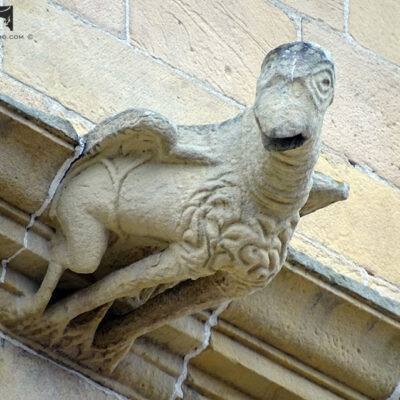 Gargoyles in the Basque Country
Gargoyles in the Basque Country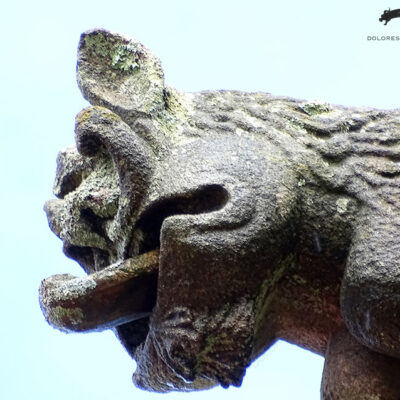 The Gargoyles of Santiago de Compostela and their Fantastic Iconography: Part One
The Gargoyles of Santiago de Compostela and their Fantastic Iconography: Part One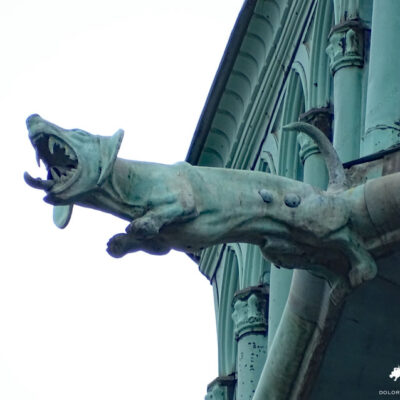 The Gargoyles on Luxembourg Cathedral
The Gargoyles on Luxembourg Cathedral The Amazing Gargoyles of Aachen Cathedral
The Amazing Gargoyles of Aachen Cathedral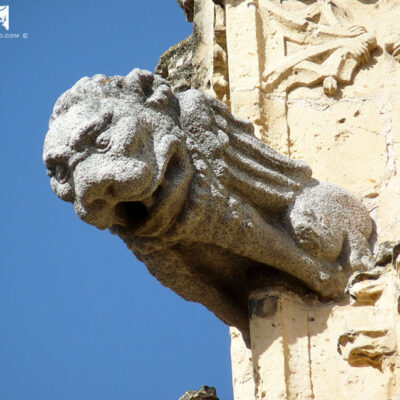 The Exceptional Gargoyles of the Segovia Cathedral
The Exceptional Gargoyles of the Segovia Cathedral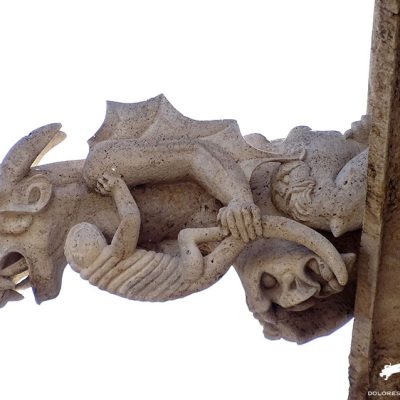 Gargoyles and the Representation of the Devil: Part One
Gargoyles and the Representation of the Devil: Part One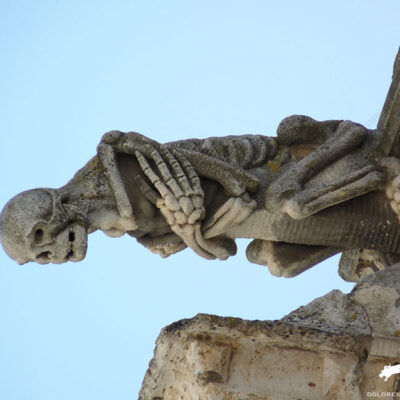 La representación de la muerte en las gárgolas
La representación de la muerte en las gárgolas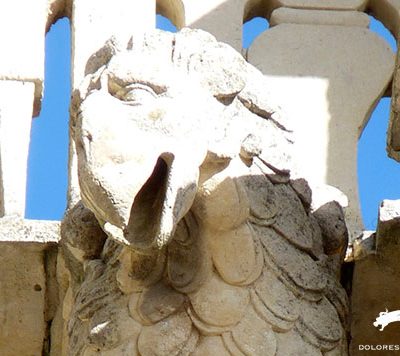 Gárgolas con forma de águila: simbolismo y representación
Gárgolas con forma de águila: simbolismo y representación